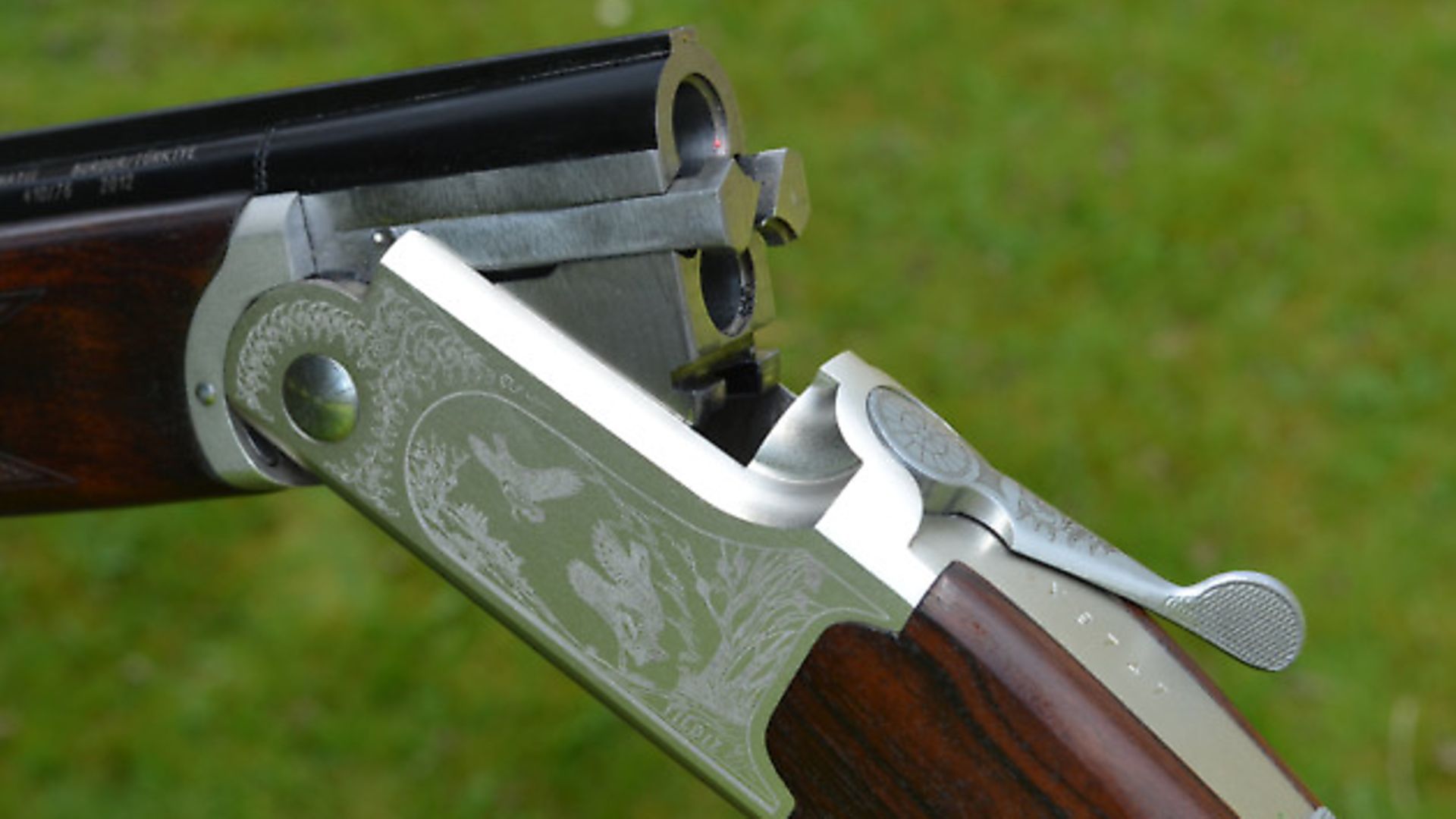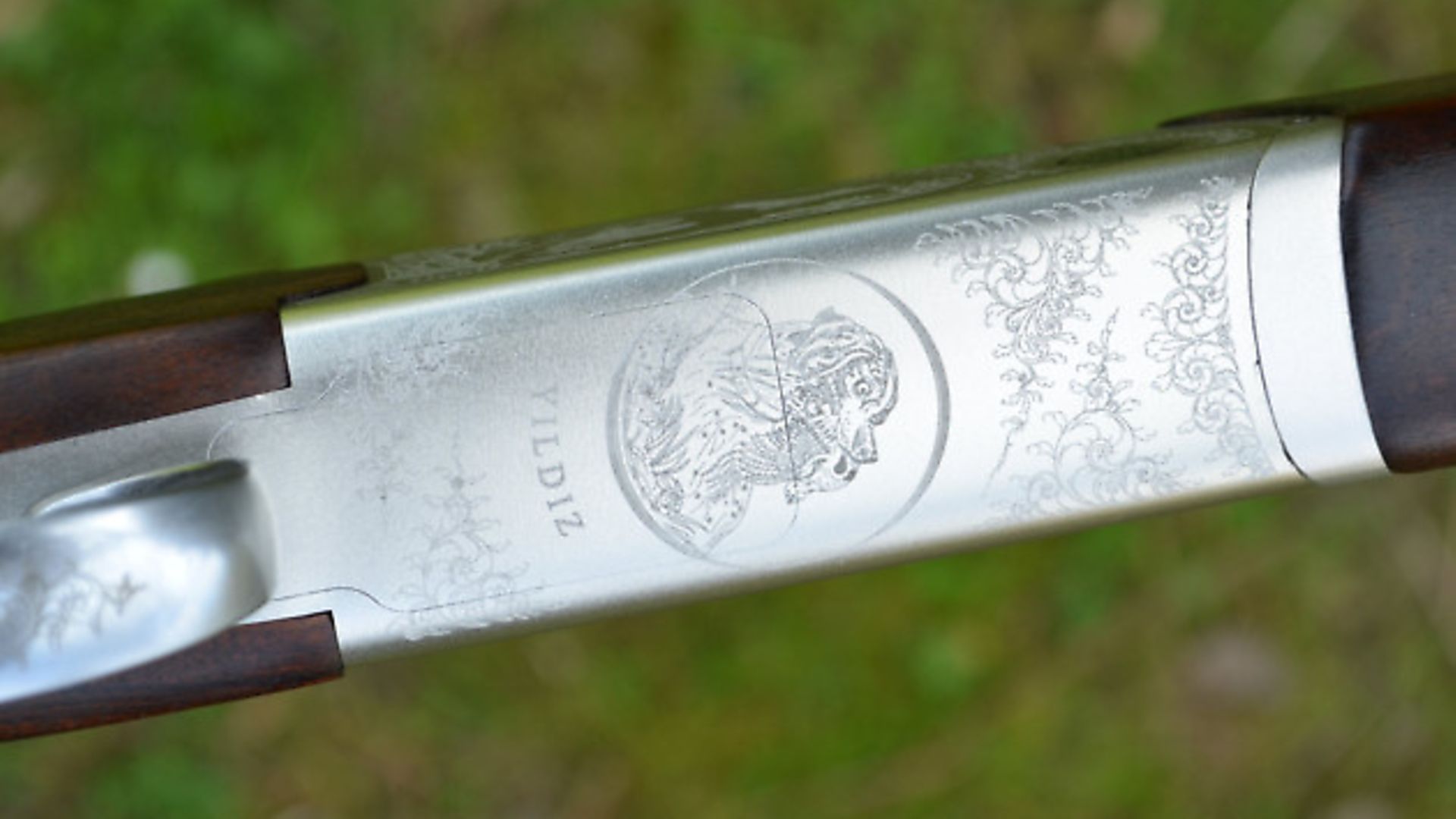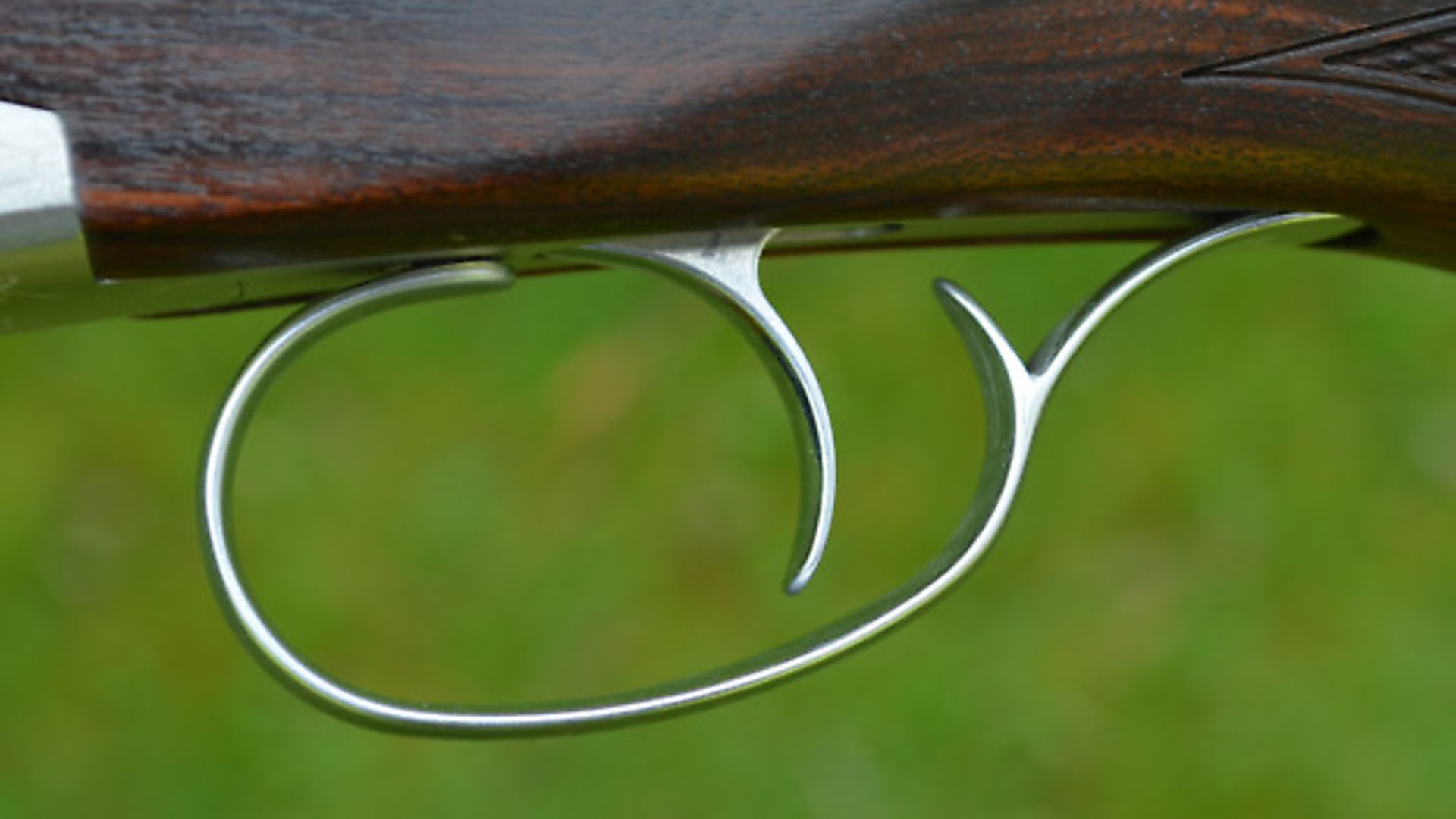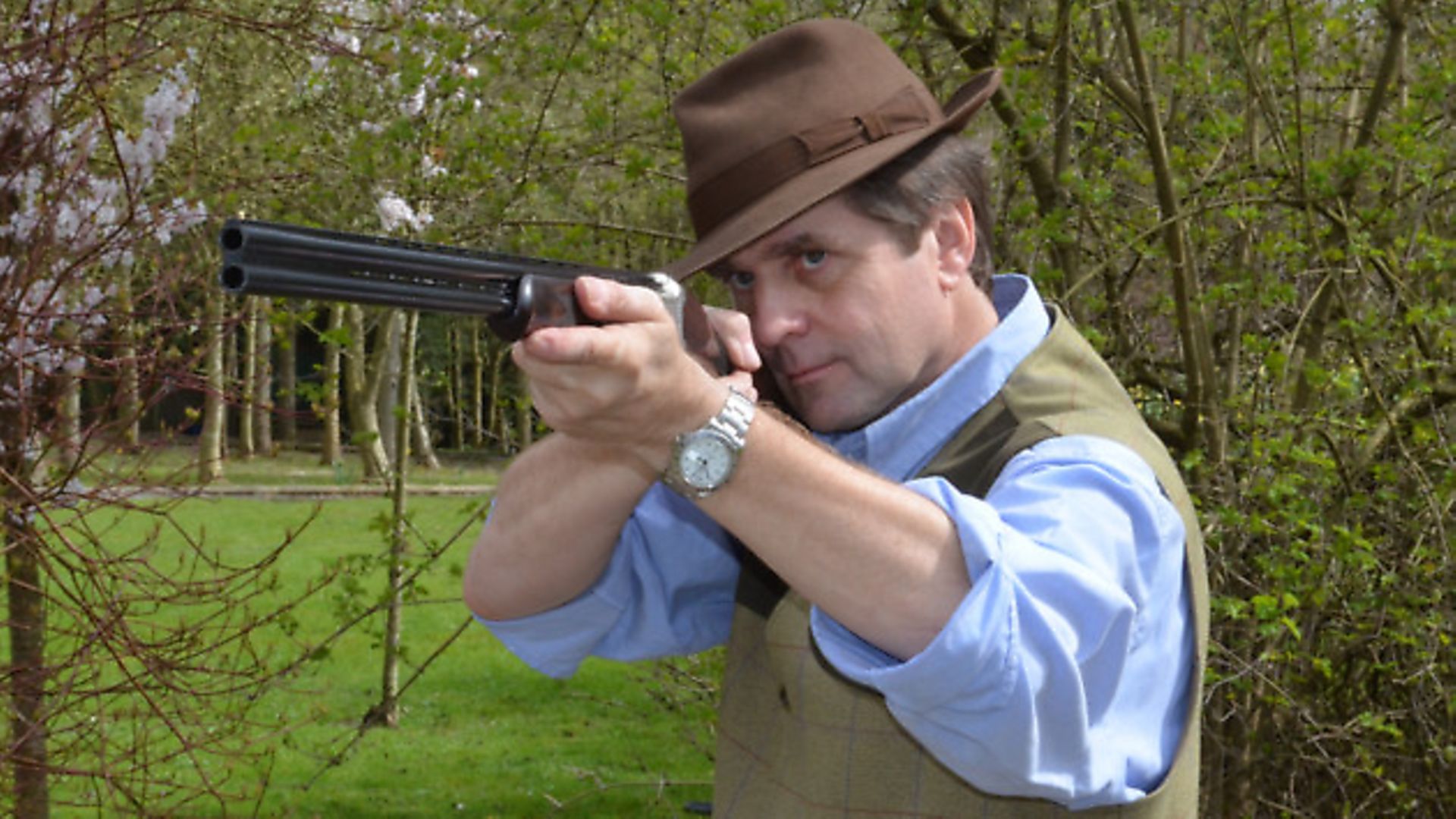Mike Yardley reviews the Yildiz .410 over-and-under shotgun and finds that though it may be a little plain, the build quality is good and it’s fun to shoot
 credit: MIKE YARDLEY
credit: MIKE YARDLEY
In this article I am looking at a Yildiz .410 over-and-under. It is a single trigger ejector (not the norm in this bore size as it is in others), hitting the scales at a featherweight 5 lbs 3 oz with 28”, 3” chambered barrels and a light alloy action.
 credit: MIKE YARDLEY
credit: MIKE YARDLEY
First impressions of the gun are that the form and finish are generally good but that it is a bit plain. The laser engraving, which includes game birds and fine scroll, is quite thin on the action – my preference would have been for a medium, slightly deeper scroll. The wood is of reasonable quality but is not especially figured; nor would you expect it to be at an RRP of £776. The general level of finish of the Yildiz is good with excellent wood-to-metal and metal-to-metal fit. The gun gives an impression of competent, modern manufacture too, and is clearly the unashamed product of high technology.
 credit: MIKE YARDLEY
credit: MIKE YARDLEY
The barrels are multi-choke and built on the monobloc system as one expects. Joints between tubes and monobloc are good, and there is the usual engraving to disguise them in the form of small circles over the joint lines. They have been SUP proofed (for 3”/76mm shells) in the UK. Turkey is not a member of CIP (the International Proof Commission) so they must be proofed here before sale.
 credit: MIKE YARDLEY
credit: MIKE YARDLEY
Mike Entwistle, the importer, tells me that he gets all his guns proofed in Birmingham. When I discussed this with him some interesting things emerged from the conversation: “We will sell a thousand guns this year,” he said. “I began in 2002. I went to the IWA trade show in Germany looking for a good value .410 side-by-side to import initially [and Mike still offers these]. I bought six, wondering if I was doing the right thing, then I bought ten, then 25, primarily because the proof house would then give you a 25% discount for putting in more than 25 guns of one gauge at a time [though now the proof price has risen and the discount has gone down to 15%].
 credit: MIKE YARDLEY
credit: MIKE YARDLEY
“I have only had two failures out of 2,000 guns and no gun has ever blown up.” This is not the sort of thing normally discussed so frankly and it impressed me, both with regard to Mike’s pragmatic and forthright approach and in regards to the guns themselves.
Returning to the barrel of the test specimen; the long chambers lead into the bores via fairly short forcing cones. The barrels are equipped with a well-machined flat sighting rib, which is relatively narrow at about 8mm. The joining ribs are solid and there is a brass bead at the muzzles. Metal beads are the most practical of all in my opinion and much better than a plastic rod in a cage or similar, which may get broken in time.
The barrels are well presented with satin blacking over what looks like a bead-blasted surface preparation. The tubes are reasonably straight, and my only comment concerns the monobloc and ejector extractors which, side-on, look very plain with a simple bright papered finish. If they had been jewelled, which is not an expensive nor time consuming procedure, I think the overall presentation could have been improved. But, I am being picky.
The alloy action has a steel reinforcing strip on the face. The firing pins emerge through this, strengthening an area which takes quite a pounding from the cartridge base on firing. Most alloy action guns employ something similar. The action design is otherwise not radical. It has the usual ‘Euro’ spec – stud pin hinging with a Browning-inspired bolt beneath the bottom chamber mouth. There is a safety and combined barrel selector mounted conventionally on the top strap. The operation was positive and the shape good; indeed, it is as good as any that I have tried. No fiddling required and positive in action. The top lever and trigger blade were well shaped too.
Machining was first class all round and the fit of metal parts very good, as noted. Guns built by high tech means have much improved in this regard. One expects a better standard than a generation ago now. Yildiz, which began in a small workshop in 1975, now makes full use of high tech including CNC and CAM systems, as well as lasers for action decoration and chequering. I suspect few European firms have greater facility with the technology.
The stock on the test gun was well proportioned, if a little short at 14” length of pull and a whisker low in the comb, with drop measurements of 1 ½” and 2 ¼”. The grip shape was very good, though, and the comb nicely tapered as well. The schnabel fore-end suited a .410 and was not too bulky. The timber was relatively plain but well finished and of good density. The butt was finished off with a simple black plastic butt plate.
Shooting impressions:
Well, I have to be honest, .410 is not my favourite bore size and I always struggle a little with guns in this gauge regardless of configuration. Happily, I shot the gun in the beautiful surroundings of the E. J. Churchill shooting ground and tried it primarily on driven birds to give myself a bit of challenge. I missed the first three and then got into the swing of it. The recoil was very low with Lyalvale 2 1/2” cartridges, the mechanical trigger did not miss a beat, and I was soon whacking highish birds with some satisfaction. If you want to pay the extra for an ejector, this gun is well worth considering. My favourite guns in the range, meantime, are the well priced non-ejector single trigger side by side and the over and under 20 bore. Turkish guns get better and better.
My thanks to Lyalvale Express for supplying the cartridges used in this test and Mike Entwhistle, Chris Cloke, Amy Martin and Jack Bell.
TECH SPECS
Make: Yildiz
Model: .410 over and under ejector
Barrels: 28”
Chokes: multi
Weight: 5lbs 3oz.
RRP.: £776 inc. VAT
We like
- The lines and form
- The quality of machining
- The fit and finish
We don’t like
- The engraving
Pictures and words by Mike Yardey